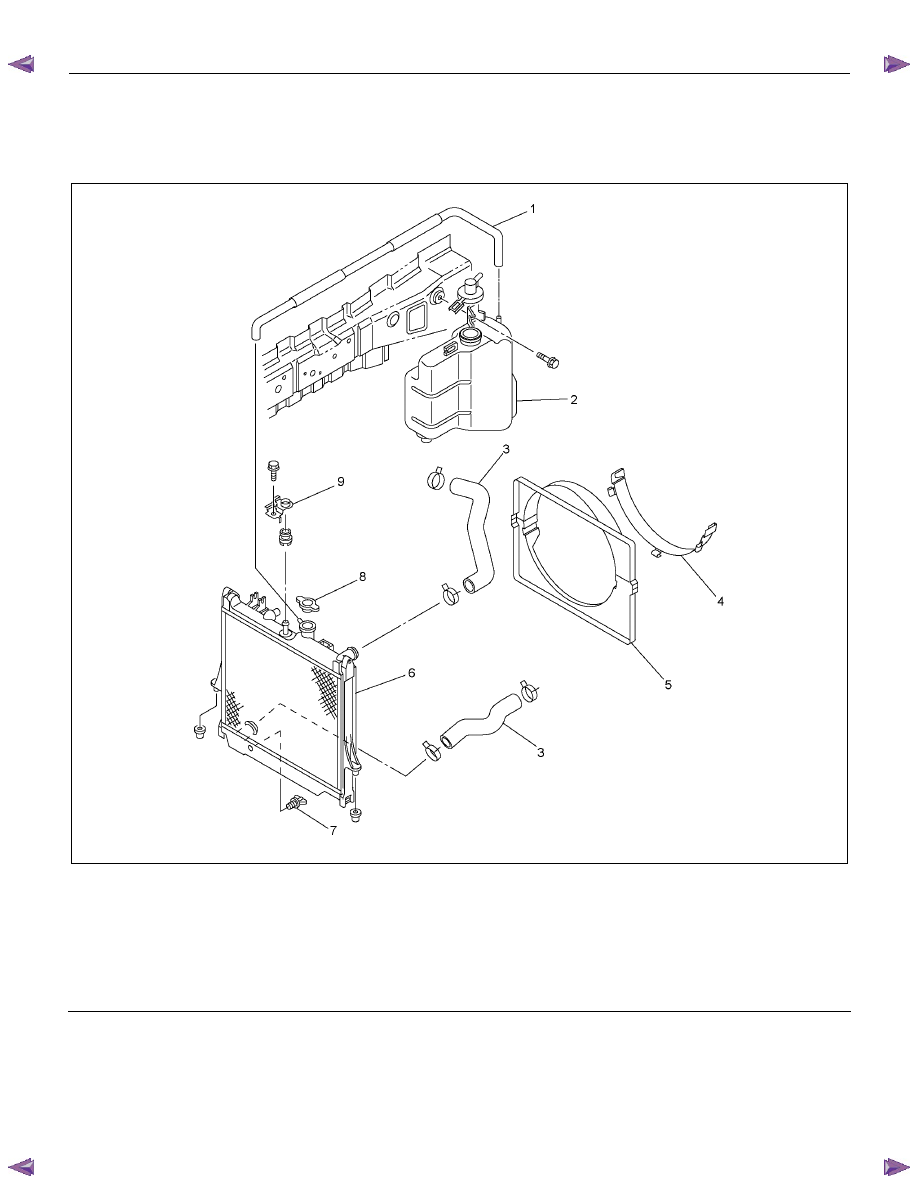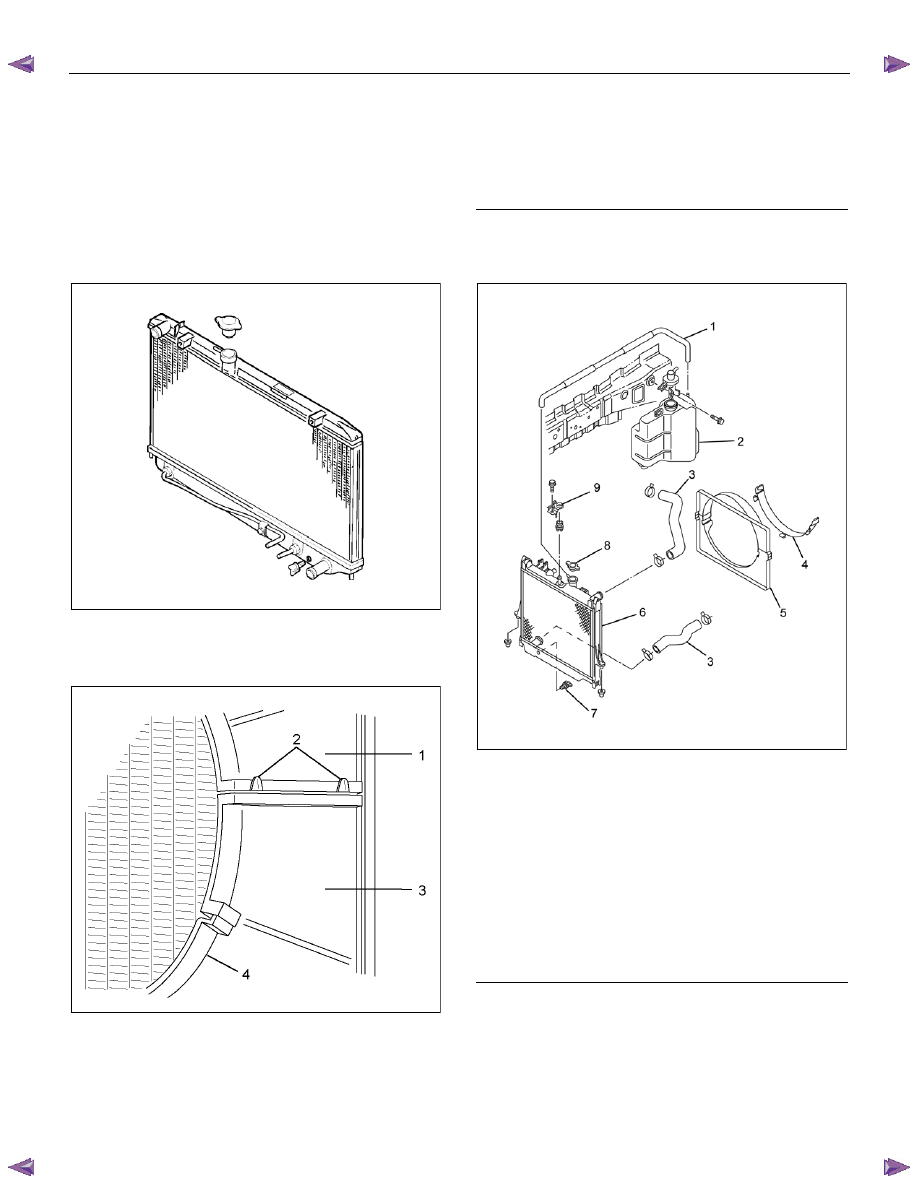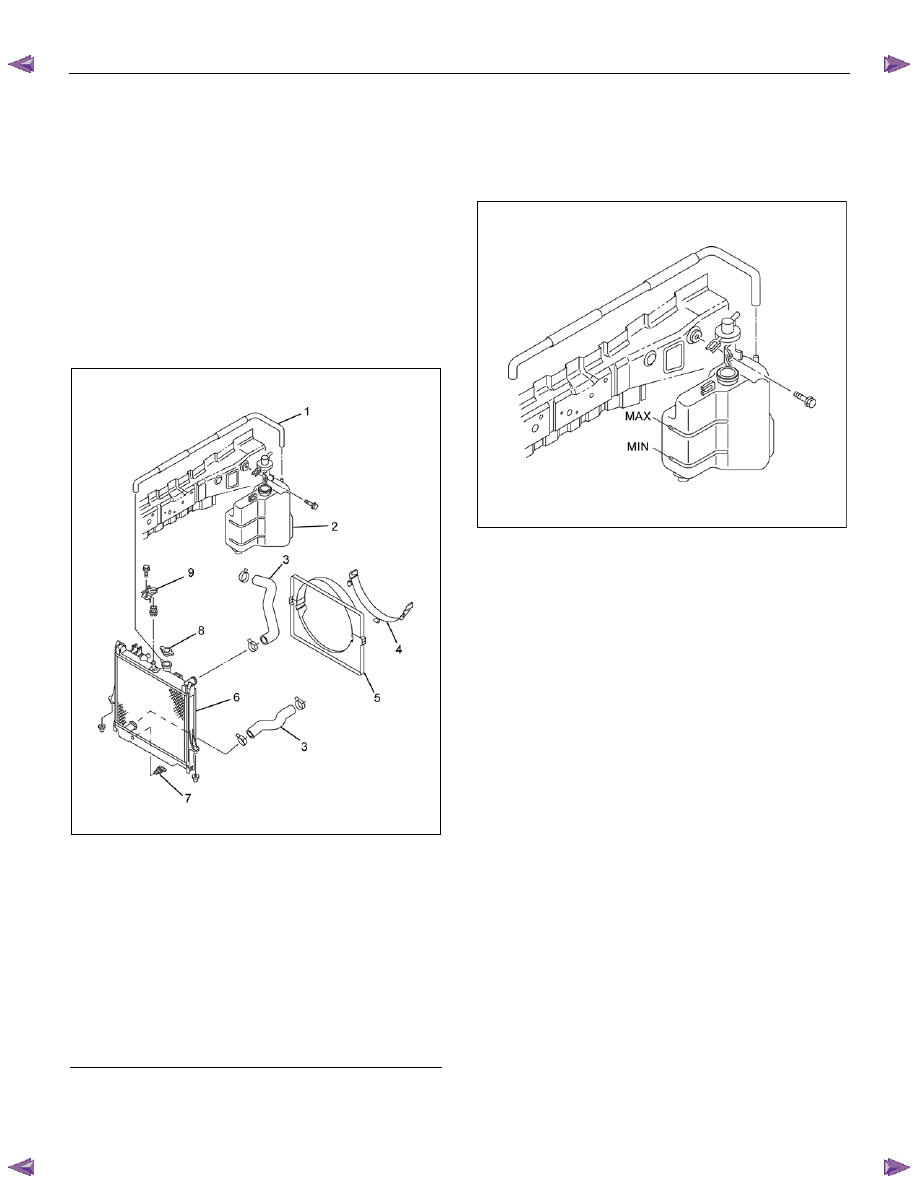Isuzu KB P190. Manual — part 384

ENGINE COOLING (4JK1/4JJ1) 6B-13
Radiator
Radiator and Associated Parts
RTW76BLF000101
Legend
1. Reserve Tank Hose
2. Reserve
Tank
3. Radiator
Hose
4. Fan Guide; Lower
5. Fan
Guide
6. Radiator
Assembly
7. Drain
Plug
8. Radiator
Cap
9. Bracket

6B-14 ENGINE COOLING (4JK1/4JJ1)
Removal
1. Disconnect battery ground cable.
2. Loosen a drain plug to drain EC.
3.
Disconnect oil cooler hose on automatic
transmission (A/T).
4. Remove the engine cover.
5. Disconnect radiator inlet hose and outlet hose
from the engine.
RTW56BSH000301
6. Remove fan guide (1), clips (2) on both sides and
the bottom lock, then remove lower fan guide (3)
with fan shroud (4).
PTW46BSH000101
Legend
1. Fan
Guide
2. Clips
3. Lower Fan Guide
4. Fan
Shroud
7. Disconnect the reserve tank hose (1) from
radiator.
8. Remove bracket (9).
RTW76BMH000101
Legend
1. Reserve Tank Hose
2. Reserve
Tank
3. Radiator
Hose
4. Fan Guide; Lower
5. Fan
Guide
6. Radiator
Assembly
7. Drain
Plug
8. Radiator
Cap
9. Bracket
9. Lift up and remove the radiator assembly with
hose, taking care not to damage the radiator core
with a fan blade.

ENGINE COOLING (4JK1/4JJ1) 6B-15
Inspection and Repair
Make the necessary adjustments, repairs, and part
replacements if excessive wear or damage is
discovered during inspection.
Radiator Cap
Measure the valve opening pressure of the pressurizing
valve with a radiator filler cap tester.
Replace the cap if the valve opening pressure is outside
the standard range.
Valve opening pressure:
93.3 - 122.7 kPa (0.95 - 1.25 kg / cm
2
/ 13.5 -
17.8 psi)
Cap tester: 5–8840–0277–0
Adapter: 5–8840–2603–0
Check the condition of the vacuum valve in the center
of the valve seat side of the cap. If considerable rust or
dirt is found, or if the valve seat cannot be moved by
hand, clean or replace the cap.
Valve opening vacuum:
1.96 - 4.91 kPa (0.02 - 0.05 kg / cm
2
/ 0.28 - 0.71
psi)
110RS006
Radiator Core
1. A bent fin may result in reduced ventilation and
overheating may occur. All bent fins must be
straightened. Pay close attention to the base of the
fin when it is being straightened.
2. Remove all dust, bugs and other foreign material.
Flushing the Radiator
Thoroughly wash the inside of the radiator and the
engine coolant passages with cold water and mild
detergent. Remove all signs of scale and rust.
Cooling System Leakage Check
Use a radiator cap tester to force air into the radiator
through the filler neck at the specified pressure of 196
kPa (2.0 kg / cm
2
/ 28.5 psi) with a cap tester:
• Leakage from the radiator.
• Leakage from the coolant pump.
• Leakage from the water hoses.
• Check the rubber hoses for swelling.
110RS005

6B-16 ENGINE COOLING (4JK1/4JJ1)
Installation
1. Install radiator assembly (6) with hose, taking care
not to damage the radiator core with a fan blade.
2. Support the radiator upper tank with the bracket
(9) and secure the radiator.
3. Connect reserve tank hose (1).
4. Install lower fan guide (4).
5. Connect radiator inlet hose and outlet hose (3) to
the engine.
6. Install the engine cover.
7. Connect oil cooler hose to automatic transmission.
8. Connect battery ground cable.
RTW76BMH000101
Legend
1. Reserve Tank Hose
2. Reserve Tank
3. Radiator
Hose
4. Fan Guide; Lower
5. Fan
Guide
6. Radiator
Assembly
7. Drain
Plug
8. Radiator
Cap
9. Bracket
9. Pour engine coolant up to filler neck of radiator,
and up to MAX mark of reserve tank.
Important operation (in case of 100% engine
coolant change) procedure for filling with engine
coolant.
RTW76BSH000101
Engine coolant change
Refer to change procedure for Draining and Refilling
Cooling System in this section.

Нет комментариевНе стесняйтесь поделиться с нами вашим ценным мнением.
Текст